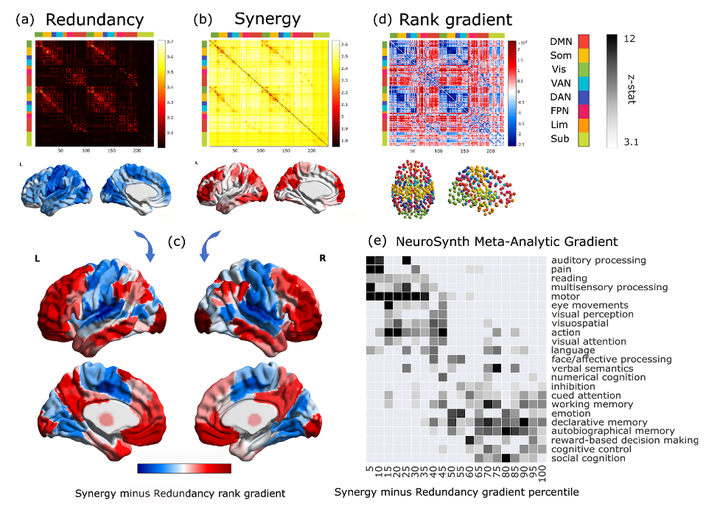A synergistic core for human brain evolution and cognition

Abstract
A fundamental question in neuroscience is how brain organisation gives rise to humans unique cognitive abilities. Although complex cognition is widely assumed to rely on frontal and parietal brain regions, the underlying mechanisms remain elusive: current approaches are unable to disentangle different forms of information processing in the brain. Here, we introduce a powerful framework to identify synergistic and redundant contributions to neural information processing and cognition. Leveraging multimodal data including functional MRI, PET, cytoarchitectonics and genetics, we reveal that synergistic interactions are the fundamental drivers of complex human cognition. Whereas redundant information dominates sensorimotor areas, synergistic activity is closely associated with the brain9s prefrontal-parietal and default networks; furthermore, meta-analytic results demonstrate a close relationship between high-level cognitive tasks and synergistic information. From an evolutionary perspective, the human brain exhibits higher prevalence of synergistic information than non-human primates. At the macroscale, we demonstrate that high-synergy regions underwent the highest degree of evolutionary cortical expansion. At the microscale, human-accelerated genes promote synergistic interactions by enhancing synaptic transmission. These convergent results provide critical insights that synergistic neural interactions underlie the evolution and functioning of humans sophisticated cognitive abilities, and demonstrate the power of our widely applicable information decomposition framework.